
红玛瑙:信息、含义以及与红玛瑙和红玉髓的关系
 红玉髓是一种半透明的红棕色至棕色玉髓宝石,自古以来就备受人们喜爱。红玉髓与红玉髓和缟玛瑙同属一类,这三种宝石都是广受欢迎的雕刻材料。
红玉髓是一种半透明的红棕色至棕色玉髓宝石,自古以来就备受人们喜爱。红玉髓与红玉髓和缟玛瑙同属一类,这三种宝石都是广受欢迎的雕刻材料。
如果一种名为“红玉髓”的宝石看起来不符合你的风格,先别急着否定它。尽管它的名字可能有点令人反感,但红玉髓确实是一种华丽的宝石。它那秋天的色彩和接地气的特性,非常适合那些追求朴实自然气息的人!
阅读完本指南后,您将了解有关红玉髓宝石的用途、治疗特性、价格、含义等所有信息!
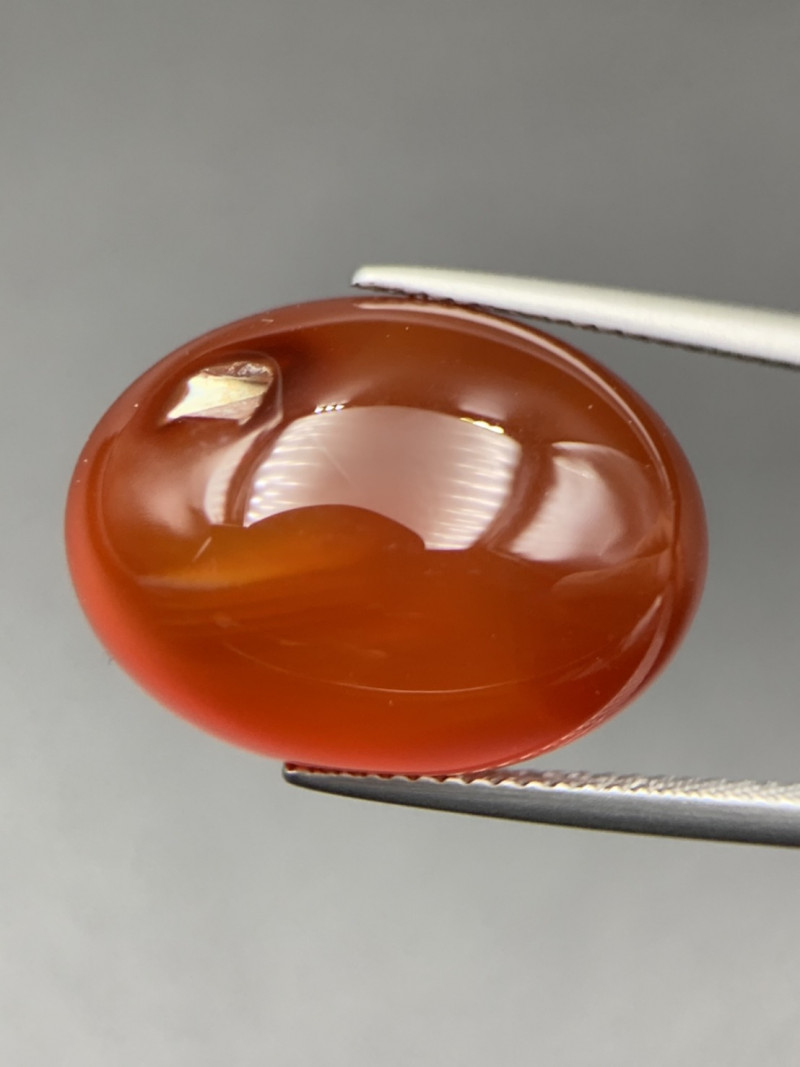
红玉是什么?
红玛瑙是一种颜色深且均匀的宝石,因与缟玛瑙混合可形成红玛瑙而闻名。
从历史上看,红玉髓和红玛瑙都是最受欢迎的半宝石,实际上用于制作印章和装饰各种配件,包括宗教用品。
古罗马人和希腊人将红玉髓称为“火之石”——它非常适合作为火星的星石和凶猛的天蝎座的黄道十二宫石!
也许你出生在炎热的夏季。红玛瑙是你的诞生石,据说象征着婚姻幸福。事实上,它是第一个八月诞生石,于18世纪的波兰确立。
说到婚姻幸福,类似的宝石红玉髓可以纪念结婚17周年,而红玉髓则是很好的替代品。
那么,红玉髓矿物的特性是什么呢?
沙丁鱼规格和特性
红玉髓矿物是玉髓的一种, 属于微晶石英。玉髓宝石由二氧化硅构成。它们与粗晶石英石(例如紫水晶)相似,但质地致密,颗粒细密,晶体细小到肉眼难以察觉。
以下是红玉髓的所有矿物特性:
莫氏硬度:6.5-7
颜色:红棕色、棕色
晶体结构:三方晶系
光泽:玻璃状、油脂状、蜡状或树脂状
透明度:半透明至不透明
折射率:1.53-1.54
密度:2.56-2.68
解理:无
断口:贝壳状或颗粒状
条痕:白色
发光:无
您知道红玉髓的矿物成分,但它与红玉髓和红玛瑙相比如何?
红玉髓、红玉髓和红玛瑙
在玉髓的混淆中,最常见的是红玉髓、褐红玛瑙和红玉髓。它们不仅都是玉髓,而且都拥有相似的暖色调,即红色、橙色、黄色和棕色。
单从名字上看,红玉髓和褐红玛瑙常常让人眼花缭乱。我们先来了解一下它们的区别。
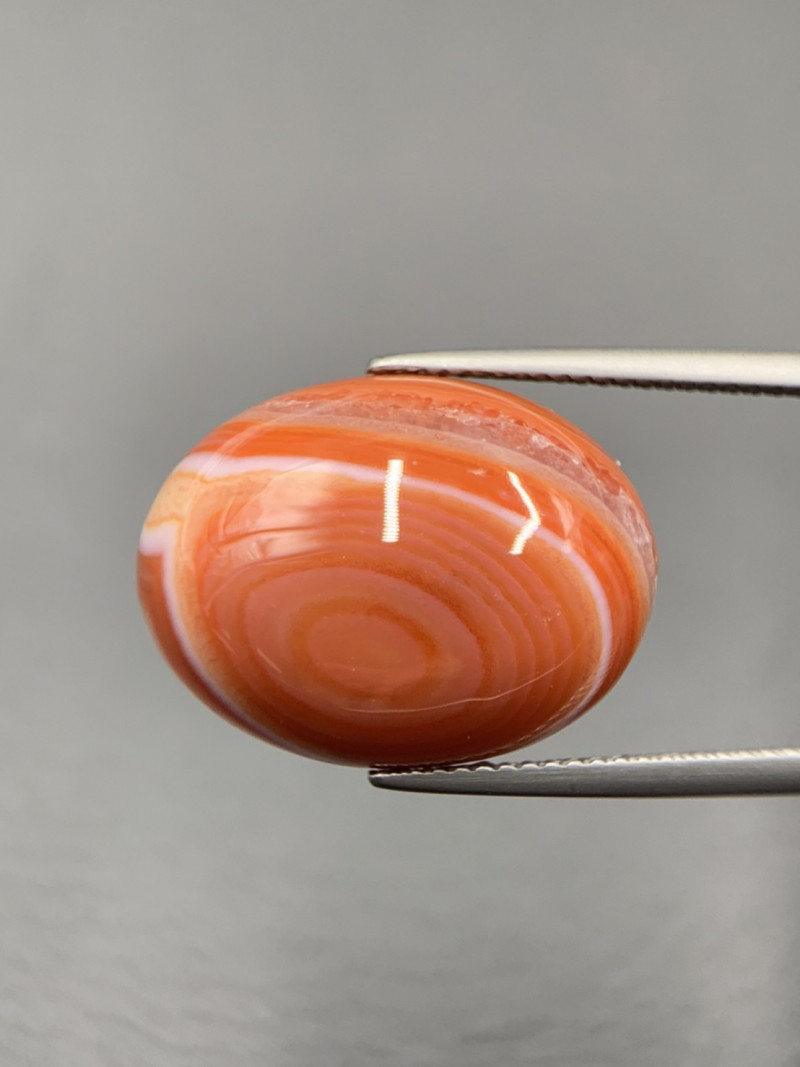 图为:红玛瑙
图为:红玛瑙
红玛瑙 vs. 红玛瑙
红玛瑙是一种玛瑙石(另一种玉髓),其上覆有红玛瑙层,形成通常为红色、橙色和白色的色带。
红玉髓和褐红玛瑙之间最容易区分的特征是红玉髓缺乏色带。此外,红玉髓的色调混合了明亮和浅色,而红玉髓则往往颜色较深。
您可能认为红玉髓和红玛瑙的关系比红玉髓和红玉髓的关系更密切,但令人惊讶的是,事实并非如此!
那么,红玉髓和红玉髓有什么区别呢?
 图为:红玉髓
图为:红玉髓
红玉髓 vs. 红玉髓
红玉髓是一种红色、橙色或棕色的玉髓,通常为纯色,但有时会呈现色域。
红玉髓和红玉髓只能通过颜色来区分,而且颜色并不总是一致的,因为有些红玉髓会呈现出红玉髓的颜色。
在没有官方区分的情况下,“红玉髓”和“玛瑙”严格来说可以算是同义词。然而,普遍的共识是,红玉髓的颜色比玛瑙更深、更棕。
这涵盖了红玉髓和红玛瑙的矿物学含义,但红玛瑙宝石的形而上学含义又如何呢?

Sard 的含义和历史
自古以来,红玛瑙就被赋予了各种含义。在那个时代,红玛瑙象征着勇敢、守护和喜悦。同样,缠丝玛瑙首饰也是古埃及人、印度人和罗马人佩戴的护身符。
关于红宝石的含义和力量的更多历史解释包括:
战争期间的保护——罗马士兵
驱除恶灵、降低犯罪率——埃及人
保护人们免受巫术侵害——美索不达米亚和印度
防止贫困,带来成功和欢乐——先知穆罕默德
获得爱神维纳斯的力量——罗马女性
文艺复兴时期的欧洲人,口才越来越好
“红玉髓”(sard)一词的出现实际上早于除“水晶”之外的任何石英术语。在《圣经·旧约》中,红玉髓是亚伦(或大祭司)胸牌上列出的12种宝石中的第一种。它也被描述为精神力量的象征。
古代史
古罗马学者老普林尼在其公元 77 年的著作《自然史》中首次正式记录了红玉髓(或称“sardius”)。普林尼声称,这种宝石的名字是为了纪念其在萨迪斯(今土耳其萨尔特)的首次发现。
然而,许多学者认为它源于波斯语“sered ”,意为“黄红色”,因为它的使用早于罗马时代。罗马帝国建于公元前625年,但红玛瑙的开采始于青铜时代(公元前3300年至公元前1200年)。红玛瑙和缠丝玛瑙的使用可以追溯到4000年前的古埃及。
据古雅典演说家德莫斯特拉图斯(Demostratus)称,第一位佩戴红玉髓的罗马人是公元前2世纪受人尊敬的将军阿非利加努斯(Africanus)。德莫斯特拉图斯认为阿非利加努斯开启了红玉髓在罗马的显赫地位。就连公元1世纪的罗马皇帝克劳狄乌斯·凯撒(Claudius Caesar)也偏爱红玉髓和祖母绿的装饰。

沙丁鱼圈
红玉髓最早也是最流行的用途之一是制作雕刻戒指。那么,红玉髓戒指是什么?它为什么如此重要?
红玉戒指通常是印章戒指,内部雕刻有浮雕,可压在蜡封上,类似于另一种流行的红玉物品圣甲虫。
一个著名的例子是伊斯兰教创始人先知穆罕默德在公元7世纪佩戴的红玉髓印戒。据说,他从公元630年开始佩戴这枚印戒,以庆祝将伊斯兰教主要朝圣地麦加大清真寺的偶像移除。
他还用它来封存寄给罗马人的信件(罗马人只读密封信件),并用阿拉伯语刻上“穆罕默德,真主的使者”的字样。这种戒指被称为aqeeq戒指,成为穆斯林男女佩戴的重要伊斯兰象征。许多人的红玉髓戒指上都刻有祈祷或邪眼图案。
现代史
直到中世纪(公元500-1500年),红玉髓和红玉髓都被称为“sardion”。17世纪,红玉髓出现在印度泰姬陵的马赛克镶嵌物中,这种镶嵌物被称为“parchin kari” (或“pietra dura ”)。
1912 年,在英国发现了数百件 16 世纪的珠宝“廉价藏品”,其中也出现了红玉髓凸圆形宝石。在维多利亚时代的英国,红玉髓是制作珠宝和印章的热门雕刻材料。
与此同时,在19世纪的俄罗斯,著名珠宝设计师古斯塔夫·法贝热(Gustav Fabergé)为俄罗斯皇室雕刻了哥萨克红玛瑙雕像。到了20世纪初,俄罗斯的缠丝玛瑙雕刻品扩展到雕塑和镇纸,并远销世界各地。
如今,红檀香的名气已不如从前。那么,从药用角度来看,红檀香如今的用途是什么呢?

红菜籽的治疗功效
所有玉髓品种,以及所有宝石,都可以作为疗愈石。虽然红玉髓如今更受疗愈人士的青睐,但红玉髓仍然是一种强大的疗愈水晶!作为一种以棕色为主的宝石,红玉髓本身就能提供基础、动力和稳定性。
对于身体和情感的治疗,红玛瑙水晶有何用途?
身体康复
历史上,人们用红檀香来抵御毒药和毒虫或动物的叮咬。它还常被用来治疗噩梦或其他睡眠问题。
对于女性来说,红檀香长期以来一直被推荐用于缓解分娩困难和减少怀孕痛苦。
情绪疗愈
从情感上来说,红玉髓能帮助那些自我怀疑、消极或冲动的人。据说它能用自信、自控和快乐取代这些情绪。
莎草也能促进恋爱关系,无论是爱情关系还是柏拉图式的感情。人们相信莎草能促进真诚的沟通,鼓励脆弱,增强无私精神,为成长奠定稳定的基础。
说到稳定的基础……
脉轮疗愈
红皮石是海底轮的脉轮石,海底轮是稳定、连接和个人成长的基础。脉轮水晶用于缓解脉轮(能量点)阻塞带来的负面影响,使其恢复平衡。
根脉轮位于脊柱底部,如果您感到骨盆不适或与他人情感疏离,则可能是根脉轮受阻。使用红檀香平衡根脉轮,您就能感到自信、踏实和安全。
当然,您也希望购买红宝石时能物有所值。让我们来看看有哪些值得关注的价值因素!
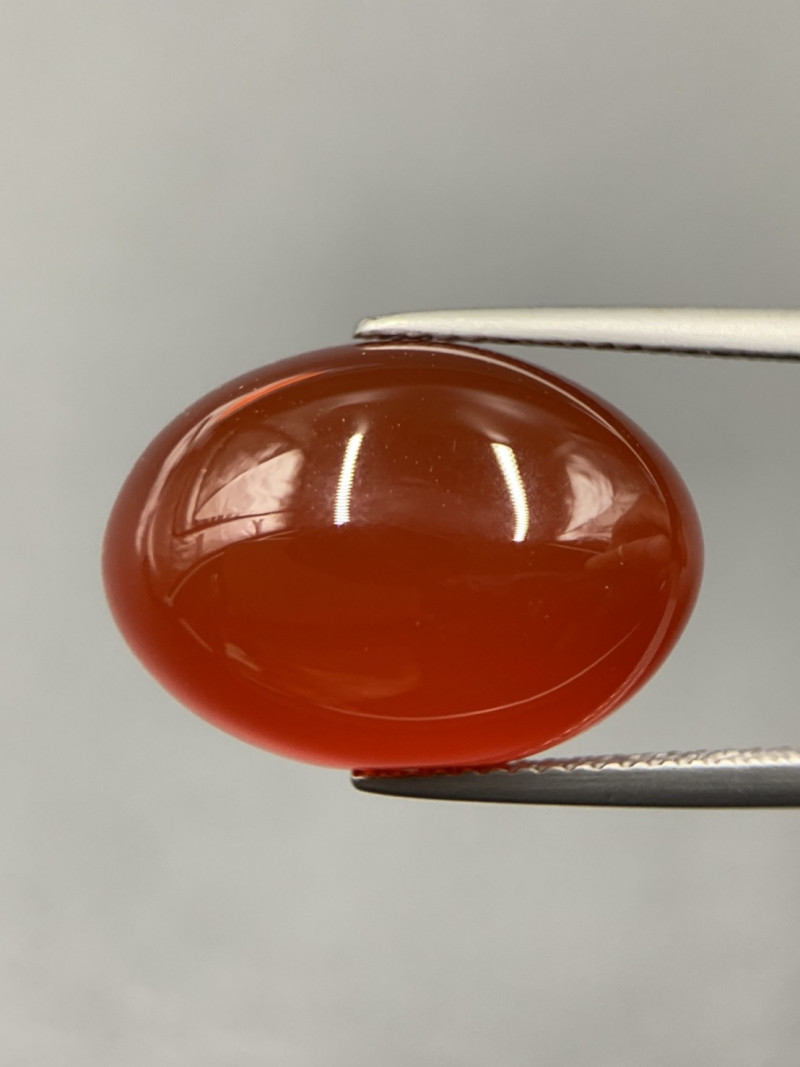
红宝石属性
红玉髓是一种储量丰富的宝石,稀有性对其价值的影响不像对其他宝石那样大。影响其价值的宝石特性包括颜色、切工、透明度和处理方式。
颜色
红玉通常呈红色至棕色,常带有橙色和黄色底色,有时还会夹杂白色或深色的浑浊内含物。这种宝石的颜色源于氧化铁杂质,通常是褐铁矿。颜色较亮的红玉价值最高,尤其是在直射光下呈现鲜红色的半透明红玉。
切
虽然雕刻珠是传统之选,但如今最常见的珠子是红褐色珠子。红褐色凸圆形宝石也十分常见,常用于制作戒指和吊坠。您或许会看到刻面珠子,但这类珠子更为罕见。
透明度
这种石头的颜色从半透明到不透明不等,但半透明的红玉髓通常价格最高。
治疗
玉髓是历史上第一批经过人工处理的宝石之一——公元前 1300 年在图坦卡蒙国王的陵墓中发现了经过加热的红玉髓!
一种染色处理方法(如今已不常见)是将玉髓浸泡在蜂蜜或糖溶液中加热。如今,深色的红玉髓有时会被加热,使其颜色变浅,因为高温会氧化其中的铁杂质。
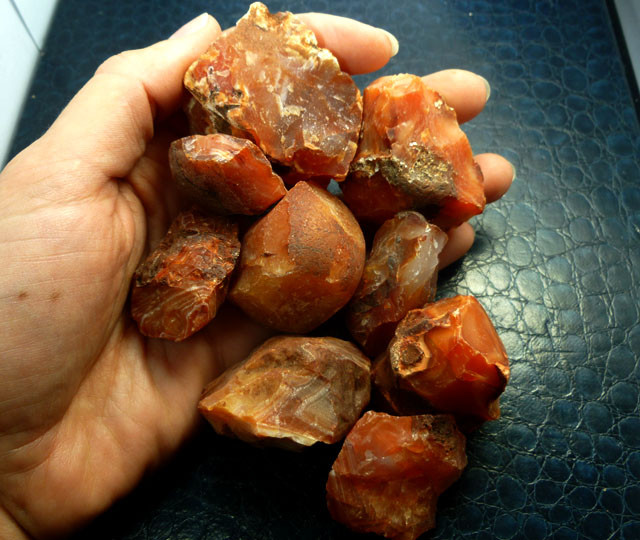
莎草的形成与来源
与所有玉髓一样,红玉髓在相当低的温度下形成,当时携带二氧化硅的地下水渗入岩石缝隙。水也能溶解物质,使二氧化硅取代它们,最终硬化成红玉髓。
通常情况下,红褐色岩石在靠近地表的熔岩内部形成,因为岩石本身以岩浆的形式喷涌到地表,冷却下来。水将二氧化硅沉积在岩石内部的空隙中,然后蒸发,使二氧化硅硬化成红褐色岩石。在红褐色岩石完全硬化之前,氧化铁会渗入其中,使其呈现出泥土般的色调。
采矿地点
印度因生产最高品质的红玉髓和红玛瑙而闻名。
莎达酱还来自:
巴西
德国
意大利
蒙古
秘鲁
波兰
俄罗斯
斯里兰卡
乌拉圭
美国(加利福尼亚州、康涅狄格州、新泽西州、新墨西哥州)
最后,红皮书值多少钱?好消息:它超级便宜!

沙丁鱼的价格和价值
批发价方面,每颗重1克拉到近18克拉的红宝石凸圆形宝石售价约为14美元。刻面红宝石起价为5美元,通常不超过15美元,但一些浅色宝石的价格约为40美元。
就珠宝而言,红玉髓吊坠的价格通常在30至40美元左右。价格更高的选择包括钻石等更昂贵的宝石。
图章戒指价格更贵,因为大多数都是古董,手工雕刻,并镶嵌在高品质的金质底座上。纯银戒指价格较低,约为50至100美元,而金质戒指的价格则从270美元到8000美元不等。
紫菜的养护和维护
红宝石的保养很简单,因为它不易破碎。不过,超声波清洗器可能会使其碎裂,所以不要使用这种方法。应该使用柔软的超细纤维布和温水混合温和的肥皂进行清洁。用另一块软布擦干,并将其与其他宝石分开存放,以免刮伤。
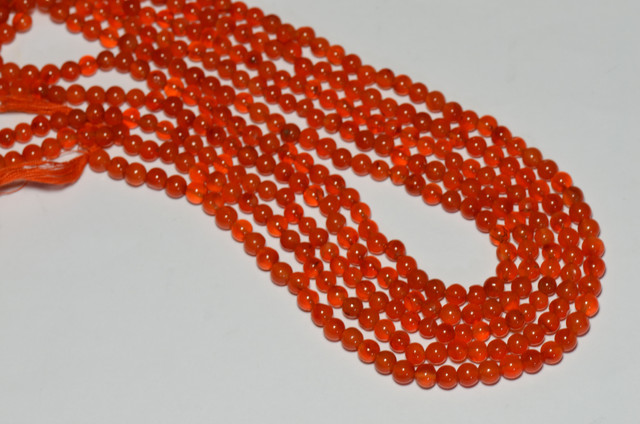
想要一件古老且触手可及的宝藏吗?
不要以名字来评判宝石——红玉髓出乎意料!这种宝石历史悠久,既是皇室贵族的象征,也是平民百姓的珍宝,实属罕见。红玉髓绝对是其中的佼佼者。
引用德国诗人约翰·沃尔夫冈·冯·歌德对红宝石的评价,“从这样的宝石中,女人可以获得甜蜜的希望和痛苦中的安慰。”
如果您正在寻找一种可以带来保护、幸福和成功的传奇宝石,那么就选择久经考验的红玉髓水晶吧!
搜索Gemstone Encyclopedia
最新的文章
彩虹格纹日光石是一种长石,由于内部含有各种包裹体,呈现出三种绚丽的光学效应。它绚丽多彩的光泽和格纹图案使其成为收藏家梦寐以求的珍宝!
12th Jan 2026
文章分类
How To's is where you will find helpful articles from gem Rock Auctions on how to cut gemstones, select gemstones and buy gemstones.
9文章数
